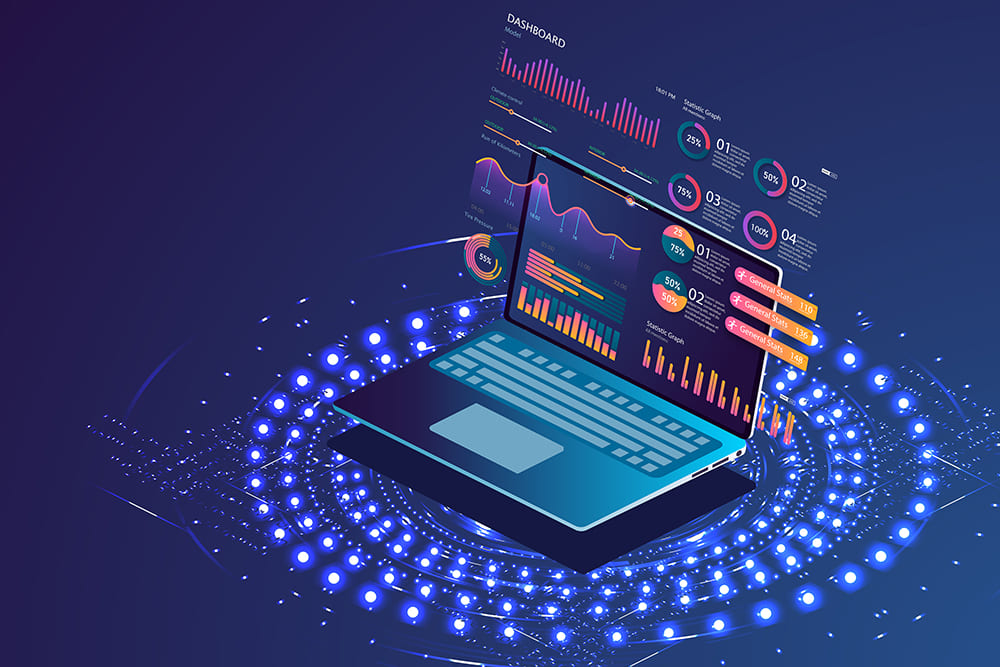Emerging Trends in Data Science
Emerging Trends in Data Science
Data science, a dynamic and rapidly evolving field, continues to revolutionize industries by harnessing the power of data. As technology advances, new trends are emerging that promise to shape the future of data science. This essay explores some of the most significant emerging trends, including the integration of artificial intelligence (AI) and machine learning (ML), the growing importance of big data analytics, the rise of automated machine learning (AutoML), the focus on data ethics and privacy, and the expanding role of data science in the Internet of Things (IoT).
1. Integration of AI and Machine Learning
One of the most profound trends in data science is the deep integration of AI and ML. AI, which aims to create machines capable of intelligent behavior, and ML, a subset of AI that focuses on the ability of machines to learn from data, are driving a significant portion of data science innovation. The use of advanced ML algorithms for predictive analytics, natural language processing (NLP), and image recognition is becoming increasingly common. For instance, in healthcare, AI and ML are used to predict disease outbreaks, personalize treatment plans, and accelerate drug discovery. This trend is expected to grow as these technologies become more sophisticated and accessible.
2. Big Data Analytics
The explosion of data generated by digital activities has led to the rise of big data analytics. Big data refers to datasets that are so large and complex that traditional data-processing software cannot manage them. The ability to analyze vast amounts of data in real-time is transforming industries. In finance, big data analytics is used to detect fraudulent activities and manage risks. In retail, it helps in understanding customer behavior and optimizing supply chains. The trend towards big data analytics is likely to continue as organizations seek to leverage the vast amounts of data they collect to gain competitive advantages.

3. Automated Machine Learning (AutoML)
AutoML is another emerging trend that aims to democratize machine learning by making it accessible to those without extensive data science expertise. AutoML automates the time-consuming tasks of feature selection, model selection, and hyperparameter tuning, allowing businesses to implement ML solutions more quickly and efficiently. This trend is significant because it lowers the barrier to entry for machine learning, enabling more organizations to benefit from data-driven insights. Tools such as Google's AutoML and Microsoft's Azure Machine Learning are leading this revolution, providing user-friendly interfaces and powerful algorithms that simplify the ML process.

4. Data Ethics and Privacy
As data science becomes more integrated into everyday life, concerns about data ethics and privacy are growing. The ethical use of data and the protection of personal information are critical issues that organizations must address. High-profile data breaches and the misuse of personal data have led to increased scrutiny and regulatory measures, such as the General Data Protection Regulation (GDPR) in Europe and the California Consumer Privacy Act (CCPA) in the United States. The trend towards greater emphasis on data ethics and privacy is likely to strengthen as consumers demand more transparency and control over their data. Data scientists must navigate these challenges by developing ethical guidelines and robust data governance frameworks.
5. Data Science in the Internet of Things (IoT)
The IoT refers to the network of physical devices, vehicles, appliances, and other objects embedded with sensors, software, and connectivity, enabling them to collect and exchange data. The proliferation of IoT devices is generating massive amounts of data, creating new opportunities for data science. Analyzing IoT data can lead to improvements in areas such as predictive maintenance, smart cities, and personalized user experiences. For example, in manufacturing, IoT sensors can monitor equipment in real-time, predicting failures before they occur and reducing downtime. This trend of integrating data science with IoT is expected to expand, as more devices come online and the demand for real-time analytics grows.
Conclusion
The emerging trends in data science are driving significant changes across various sectors. The integration of AI and ML, the emphasis on big data analytics, the advent of AutoML, the focus on data ethics and privacy, and the expanding role of IoT are reshaping the landscape of data science. These trends are not only enhancing the capabilities of data scientists but also making data science more accessible and impactful. As these trends continue to evolve, they will undoubtedly lead to further innovations and transformations, solidifying data science's role as a cornerstone of the digital age.
Compiled by: Pratiksha Bisht



Comments
Post a Comment